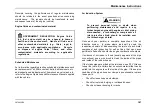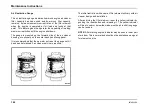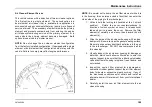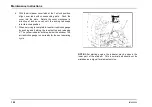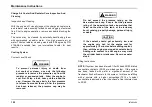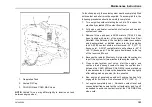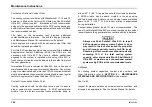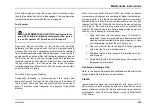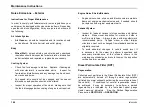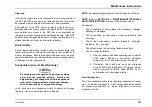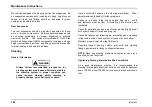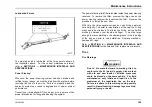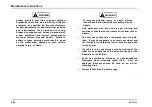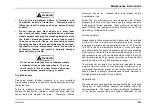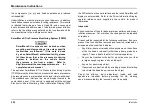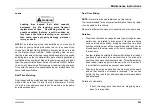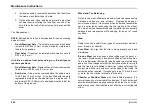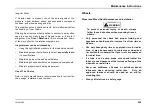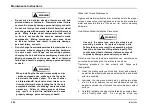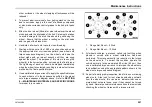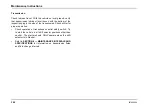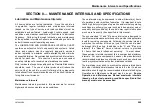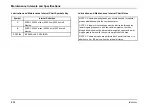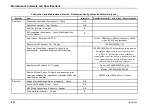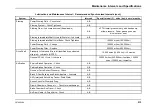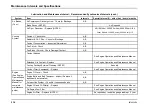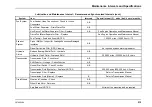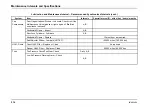
Maintenance Instructions
WARNING
•
Do not mix stud-piloted wheels or fasteners with
hub-piloted wheels or fasteners.
Premature wheel
failure can result in property damage, personal injury,
or death.
•
Do not change from steel wheels or a steel inner
and aluminum outer wheel combination to aluminum
wheels without changing the mounting hardware since
the thicker aluminum wheels require longer studs.
In some cases with flange nut mounting systems,
changing the hub and stud assembly may be required.
Improperly mixing components could cause wheel
or fastener failures and result in property damage,
personal injury, or death.
WARNING
Do not mount tube-type tires on tubeless wheels
or tubeless tires on tube-type wheels. To do so
could result in tire or wheel failure and cause
property damage, personal injury, or death.
Tire Maintenance
Preserving proper inflation pressure is a very important
maintenance practice to ensure safe vehicle operation and long
life for the tires.
Failure to maintain correct inflation pressure may result in
sudden tire destruction, improper vehicle handling, and may
cause rapid and irregular tire wear.
Therefore, inflation
pressures should be checked daily and always before
long-distance trips.
Follow the tire manufacturer’s recommended cold inflation
pressure for the tire size, type, load range (ply rating), and axle
loading typical for your operation. (Each steer axle tire load will
equal 1/2 steer axle loading; each drive tire load will be 1/4 the
axle loading, if fitted with four tires.)
Checking Inflation
Always check inflation pressure when tires are cold. Never bleed
air from hot tires to relieve normal pressure buildup. Normal
increases in pressure during operation will be 10 to 15 psi (69
to 103 kPa), which is allowable in truck tires. Tires on the same
axle should have the same air pressure as the corresponding
other tire(s) on that axle. Steer tires should be within a 3 psi (21
kPa) pressure range. All drive tires should be within a 5 psi (34
kPa) pressure range. Tag or pusher axle tires on the same axle
should be within a 5 psi (34 kPa) pressure range.
To minimize rim corrosion, it is particularly important to keep
moisture from the inside of tires and proper selection of air
compressor equipment, proper air line routing, and the use of
shop air dryers is strongly recommended to avoid moisture in
the high-pressure air used for tire inflation.
Underinflation
Tires should not be allowed to become underinflated. Increased
flexing due to underinflation causes heat buildup within the
tire components. This leads to reduced strength, breakdown
of the rubber compounds and possible separation of the
3878859R2
201
Summary of Contents for ProStar+ Eagle Series.
Page 4: ...Operator s Manual ProStar Series Printed in the United States of America 3878859R2 ...
Page 12: ...Table of Contents Section 10 Index Index 235 viii 3878859R2 ...
Page 26: ...Model Description Exterior Components 14 3878859R2 ...
Page 28: ...Model Description 16 3878859R2 ...
Page 59: ...Controls Features 3878859R2 47 ...
Page 70: ...Controls Features Declination Zone Map 58 3878859R2 ...
Page 93: ...Controls Features Center Dash Panel Wing Panel 3878859R2 81 ...
Page 128: ...Sleeper Features 116 3878859R2 ...
Page 182: ...Operation 170 3878859R2 ...
Page 241: ...Maintenance Intervals and Specifications Typical Interior Fuse Panel Layout 3878859R2 229 ...
Page 262: ...Index 250 3878859R2 ...

